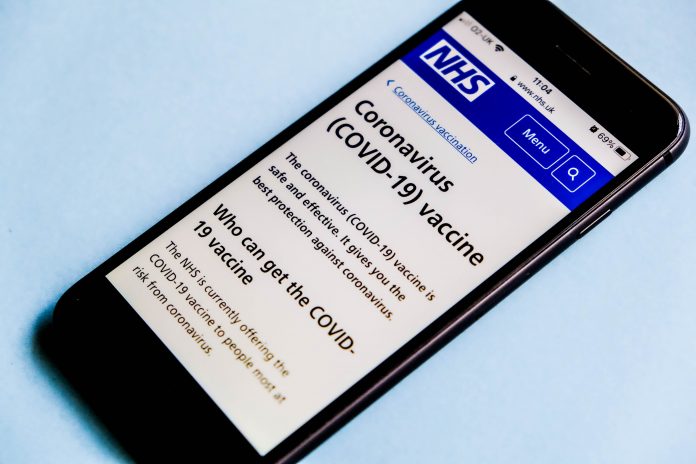Adam Enterkin, Global SVP Sales at BlackBerry, explores the critical role of secure crisis communications for the vaccine rollout and the value of a communication strategy to combat misinformation
The Coronavirus (COVID-19) is arguably the worst pandemic in more than a century. Next to the 1918 influenza virus, known as the Spanish Flu, that infected approximately 500 million people – one third of the world’s population, and causing 50 million deaths worldwide – COVID-19 has infected approximately 115 million people and taken the lives of more than 2.5 million, and counting, according to the World Health Organisation.
At every stage of the pandemic – from onset to vaccine rollout – there have been serious challenges for those on the frontline of the crisis and industries that have been impacted as a result. Alongside the logistical challenges, countries have also been battling a misinformation crisis as a lack of clarity and fake news sources have spiralled out of control. All of these challenges that governments, healthcare organisations and industries are facing fall down to communication.
A multi-level crisis
At the onset of the pandemic in early 2020, medical facilities and staff were suddenly overwhelmed with the influx of so many dangerously infectious patients. Personal protective equipment (PPE) and therapeutics were quickly depleted as manufacturers scrambled to meet escalating demands. Countries around the world prepared to go to war against a new enemy: COVID-19. In this global crisis, strategic communications have been the foundation for success.
And as the pandemic exploded, the need for constant communications was dire to help hospitals increase capacity, manufacturers to address emergency equipment and medicine shortages, and air, rail, and road transportation to distribute resources. World leaders communicated the urgency of things transpiring and stressed the importance of vaccinations for individuals to protect themselves and those around them.
In normal times, public safety requires intensive efforts by individuals, teams, and organisations. During a crisis, effective and efficient communications are even more critical. Having access to secure critical communications solutions is essential for both peace of mind of governments, healthcare organisations and senior leaders, and confidence in the capability to share the necessary information needed to make critical safety decisions.
Logistical battles
The ingenuity of tireless medical science professionals resulted in a series of therapeutics and emergency use authorised (EUA) vaccines being developed in record time to combat the virus. Striving to put an end to the pandemic, a massive global rollout began in early 2021 to get people everywhere vaccinated. Given the importance of dispensing the life-saving vaccines, the communications around the delivery were as critical as getting the shot.
As vaccination programs ramped up, extreme shortages of available vaccines were instantly evident. Communications between hospitals/NHS have been key to ensuring vaccine supplies are where they are needed. Communications between government leaders, hospitals, pharmaceutical companies, dispensing centres, volunteers, and crowds of anxious recipients have become critical.
In addition to logistics in managing injection sites, from super pods in stadiums to universities, clinics and local medical offices, multiple types of vaccinations with different protocols and storage requirements have presented new and complex challenges. In addition, coordination of first and second dose appointments for some vaccinations have wreaked havoc on registration websites. Phone centres have been flooded with inquiries of recipient eligibility and securing vaccination appointments.
All of these can be consolidated and centralised with an effective communications strategy. Not only can this prevent unnecessary wastage, but it can also improve the efficiency of the vaccine rollout.
Advanced technologies combatting misinformation
Alongside the vaccination programme ramping up, so has the rumour mill, false claims and fake news around the vaccine. Whilst the government, healthcare organisations and senior leaders have a role to play in combatting misinformation, technologies like AI and machine learning can add tremendous value in helping identify bots or false information at scale.
We’ve already seen examples of companies working on verification tools that can label, among other things, accounts as automated bots. However, it’s important to note that any verification process involves individuals who will control and advance the “verifying”— these individuals must be aware of the biases they hold as they advance their duties and sensitivity as to how they’re perceived by the public.
Another major problem with disinformation as a threat is that it’s increasingly difficult to classify and attribute its source of origin. In the past twelve months, the proliferation of crimeware-as-as-service offered on the Dark Web has soared and has become so effective and integrated with nation-states that it can be near impossible to attribute responsibility. BlackBerry recently produced a research report on the world’s largest hacker-for-hire operation that used social engineering and deepfakes to further political causes and gain information on certain targets. Ongoing research and intelligence into these groups will be essential to ensuring that these targeted campaigns don’t have an impact on the fight against COVID-19.
Harnessing the power of critical communications and advanced technologies with the capability to combat misinformation will prove instrumental over the coming months – everyone has a role to play in this ongoing battle and technology will be our ally.











